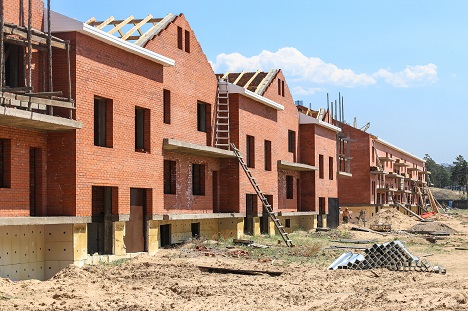Sixteen months ago, in May 2020, I pounded the table on homebuilder stocks.
That idea has worked out extraordinarily well…
While the S&P 500 Index has had an incredible run, the homebuilding sector has almost doubled the returns of the overall market.
My reasoning for owning homebuilders was extremely simple (like with most good stock market investments).
You really needed to know only two things…
- The economic shock of COVID-19 decimated the share prices of these companies.
- While share prices were down, the medium- and long-term business prospects for these companies were excellent.
The stock market had served up a bargain entry price on a group of companies that had a massive secular tailwind behind their businesses.
In hindsight, this was a no-brainer.
A New Opportunity in the Housing Sector
The United States has had nearly a decade and a half of massive underbuilding of new homes.
Unsurprisingly, we are now facing a shortage.
New home construction since the housing crisis has been at its lowest level in 60 years.
Meanwhile, our population has nearly doubled over that time.
From 1960 to 2008, the average number of new homes built within any given three-month period in the U.S. ranged from 1 to 2 per 100 households.
Since 2008, that number has been just 0.5 new homes per 100 households – roughly half the bottom end of the normal range…
While we were onto this housing shortage story here in Wealthy Retirement a year and a half ago, the national media is just now picking it up.
Even President Biden is now involved and drawing up plans to try to fix our new housing crisis – a national housing shortage.
Economics 101 tells us that when the supply of a product is short, the price of that product predictably goes up.
That’s exactly what has happened to American home prices.
This summer, housing prices across the United States have seen record year-over-year increases.
The S&P CoreLogic Case-Shiller U.S. National Home Price NSA Index, which measures average home prices in major metropolitan areas across the nation, rose 18.6% in June, up from a 16.8% annual rate the prior month.
That is the highest annual rate of price growth since the index began in 1987.
Below, you can visualize the closely related Case-Shiller Composite 20 Home Price Index’s 19.1% year-over-year gain.
This rapid increase in house prices is great news for companies that lend money against the value of those homes.
For a lender, it is very hard to lose money on a loan if the value of the collateral that it holds against that loan is skyrocketing.
With that in mind, the NexPoint Real Estate Finance (CUSIP 65342vaa9) May 1, 2026, 5.75% coupon corporate bonds look appealing to me.
NexPoint makes loans against the two specific real estate asset classes that I like the most.
More than 40% of NexPoint’s loans are to owners of multifamily housing rental properties.
“Multifamily” refers to a housing type where multiple apartments are contained within one housing structure.
The other nearly 60% of NexPoint’s loans are to owners of single-family rental (SFR) properties.
SFRs are houses where the entire structure is rented by one family.
That means all of NexPoint’s loans apply to secured residential real estate, the value of which has soared over the past year.
The loan portfolio has no exposure to commercial properties.
NexPoint’s total loan portfolio currently has a value of $1.5 billion and is spread across just 64 carefully selected loans.
Going into this year, the value of NexPoint’s loan portfolio amounted to just 66% of the value of the property against which it is collateralized.
This statistic is known as the loan-to-value (LTV) ratio.
It means every $66 that NexPoint lends is secured against a property worth $100.
Most of those loans were made before residential property prices skyrocketed.
That means the LTV across NexPoint’s entire loan portfolio is now likely considerably lower than 66%.
With a conservative LTV like this, even if a borrower were to default, NexPoint would not incur any losses because the underlying collateral property is worth considerably more than the loan.
Even better, despite the economic hardship created by the ongoing pandemic, none of NexPoint’s loans are currently nonperforming.
That means NexPoint has not only incredible asset coverage for its loans but also a portfolio that’s performing perfectly.
With these NexPoint bonds currently trading at a slight premium of $103, investors can lock in a yield to maturity of nearly 5% through May 2026.
That is a terrific, secure income stream in a world starved for yield.
Good investing,
Jody



